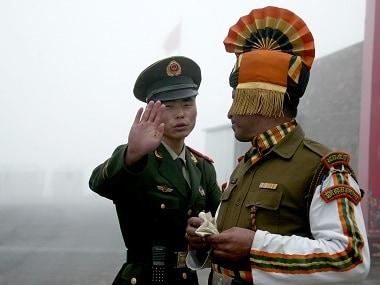Modern-day warfare is fought as much on the information superhighways as on the battlefields. China, which has been flexing its muscles against the world, has continued to make extensive use of different online mediums to influence the views of individual internet users as well as those of governments. China’s favoured targets for such psyops have primarily been the United States and Taiwan, and recently, the Hong Kong protests. The recent clashes between India and China in the Galwan Valley appear to be bringing Indians in the crosshairs of the well-oiled Chinese psyops machinery. Internet access makes such psychological operations much easier and more effective than in the Cold War era. The popularity of Chinese-owned social media services in China’s target countries also helps propagate the Chinese agenda. [caption id=“attachment_4074493” align=“alignleft” width=“380”]  Representational image. AFP[/caption] Such online psychological operations target internet users with selective messaging, which includes altered facts and disinformation which then influences the targeted users’ emotions and objective reasoning. In a recent example, a Twitter user, claiming to be from China, tweeted a video (the tweet was later deleted) and said that ten Indian soldiers were administered hyperbaric oxygen treatment by China’s People’s Liberation Army (PLA). The tweet also claimed that there were no PLA casualties in the clash with the Indian Army in Galwan Valley. This tweet from an unverified Twitter user received hundreds of retweets and likes. The attached video was also viewed over a hundred thousand times. Some journalists also fell for the trap and spread the message further, quote tweeting the original tweet (see here and here). Their tweets also got hundreds of retweets and likes. A simple fact-check on the video using readily available tools reveals that the video that carried a CNTV logo was from 2017 and the video is still available on a Chinese video-sharing website. CNTV (China Network Television) is a Chinese state-owned national web-based TV broadcaster. The Twitter account @evazhengll’s profile mentions the user’s location as China. However, the user’s tweets regularly mention activities in Pakistan. The account also frequently tweets anti-India and pro-Pakistan messages. This isn’t the first time @evazhengll was caught spreading fake news. A September 2019 tweet with an attached GIF that claimed Indian soldiers were inside Chinese territory was also found to be fake. The video from which the GIF was extracted was also from 2017. The above example appears to be only a sample of what to expect in the near future as China ups its psyops against India. Chinese social media apps have been growing in India. Many of the most popular apps in India are owned by Chinese companies which appear to follow Chinese censorship laws that are intolerant of any criticism of China even when operating in other countries. WeChat, a popular messaging app owned by China’s Tencent, was found censoring political messages posted by Americans and also banning American accounts for discussing events in Hong Kong. Something similar is also happening here in India. Users have pointed out that WeChat had deleted a statement by Prime Minister Narendra Modi on the India-China border situation. Chinese-owned news aggregation services are known to restrict or downrank content critical of China even for Indian users. The reach of a recent online poll by News18 on China was also similarly found to be restricted. Recently, Twitter removed 23,750 Twitter accounts along with approximately 150,000 more accounts connected to China for misusing the platform to spread propaganda and misinformation. This is only the tip of the iceberg. Twitter represents only a small minority of global internet users and its base is even smaller in India. Even though Twitter’s influence in shaping the news narrative could be bigger than many other platforms with more users, a vast majority of Indian users communicate in an internet that is unindexed by search engines.
Such online psychological operations target internet users with selective messaging, which includes altered facts and disinformation which then influences the targeted users’ emotions and objective reasoning.
Advertisement
End of Article


)

)
)
)
)
)
)
)
)



